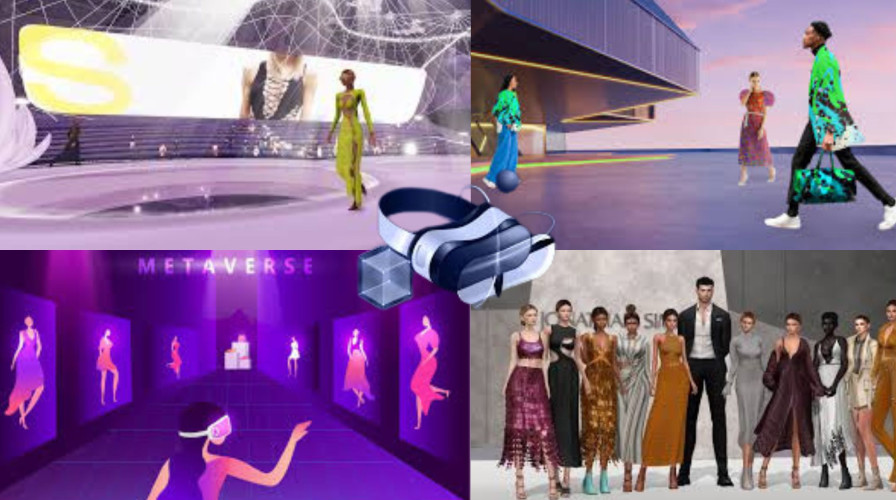Fashion Forward Exploring the Metaverse with Virtual Runways and Digital Clothing
The fashion industry is experiencing a ground-breaking transformation as it ventures into the digital realm of the metaverse. This futuristic space, where virtual reality (VR) and augmented reality (AR) merge, is revolutionizing how we experience fashion, from virtual runways to digital clothing. Here’s a deep dive into how fashion is evolving in the metaverse and what it means for the industry’s future.
The Metaverse: A New Fashion Frontier
The metaverse is a collective virtual shared space, created by the convergence of virtually enhanced physical reality and physically persistent virtual spaces. It includes augmented reality, virtual reality, 3D virtual worlds, and the internet. In this expansive digital universe, fashion brands are finding innovative ways to engage with consumers and showcase their creativity.
Virtual Runways: A New Catwalk Experience
Immersive Fashion Shows
Virtual runways are redefining the fashion show experience. Designers and brands are creating immersive fashion shows that can be attended by audiences worldwide, regardless of their physical location. Through VR headsets or AR apps, viewers can experience the excitement of a fashion show as if they were sitting front row, complete with interactive elements and 360-degree views.
Accessibility and Inclusivity
Virtual runways democratize access to high-fashion events, traditionally reserved for industry insiders and celebrities. Now, anyone with an internet connection can attend these shows, making fashion more accessible and inclusive. This shift also allows brands to reach a broader audience and engage with diverse demographics.
Sustainability and Innovation
By hosting virtual fashion shows, brands reduce the environmental impact associated with traditional runway events, such as travel emissions and resource consumption. Additionally, the digital format allows for innovative presentations, incorporating fantastical elements and special effects that are impossible in the physical world.
Digital Clothing: The New Wardrobe
Wearable NFTs
Non-fungible tokens (NFTs) are making waves in the fashion industry as digital assets representing ownership of unique items. Fashion brands are creating wearable NFTs—digital clothing and accessories that can be worn by avatars in the metaverse. These digital garments can be collected, traded, and showcased in virtual environments, offering a new form of self-expression.
Augmented Reality Fittings
AR technology is enabling virtual try-ons, allowing consumers to see how digital clothing would look on them before making a purchase. This interactive shopping experience enhances consumer engagement and reduces the uncertainty associated with online shopping, leading to higher customer satisfaction.
Sustainable Consumption
Digital clothing offers a sustainable alternative to fast fashion. Since these items exist only in the virtual world, they require no physical resources to produce, thereby reducing waste and environmental impact. Consumers can experiment with new styles and trends without contributing to textile pollution.
The Future of Fashion in the Metaverse
Brand Collaborations and Creativity
The metaverse opens up new possibilities for collaboration between fashion brands and digital artists. These partnerships can result in unique digital collections that push the boundaries of traditional fashion design, incorporating elements of fantasy and science fiction.
Economic Opportunities
The rise of digital fashion is creating new economic opportunities within the metaverse. Virtual marketplaces for buying, selling, and trading digital clothing are emerging, along with job opportunities for digital fashion designers and developers.
Enhanced Consumer Experiences
The integration of fashion and technology in the metaverse enhances consumer experiences by making them more interactive and personalized. Brands can create virtual showrooms, interactive campaigns, and customized virtual styling sessions, fostering deeper connections with their audience.
Conclusion
Fashion in the metaverse is not just a trend; it’s a transformative movement that is reshaping the industry. Virtual runways and digital clothing are breaking down traditional barriers, making fashion more accessible, sustainable, and innovative. As technology continues to evolve, the metaverse will play an increasingly central role in how we experience and engage with fashion, heralding a new era of creativity and inclusivity in the digital age.









